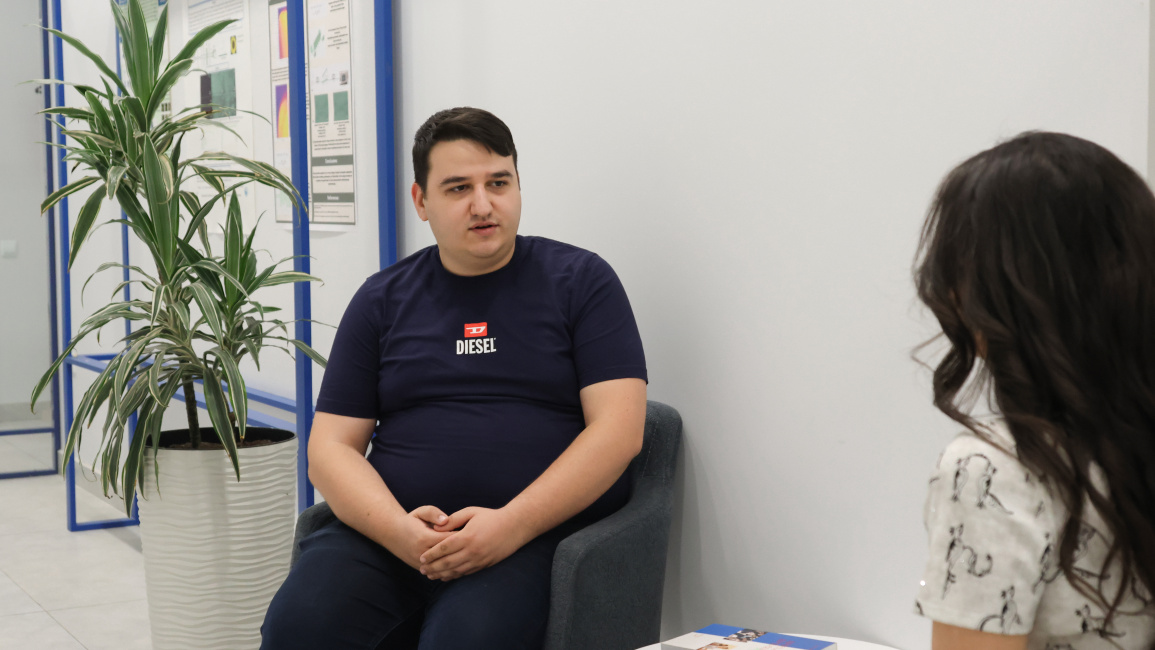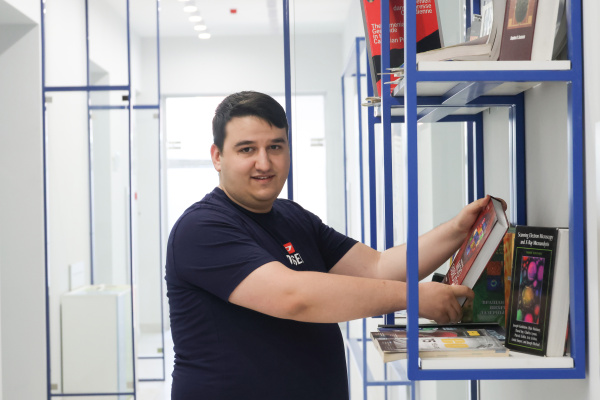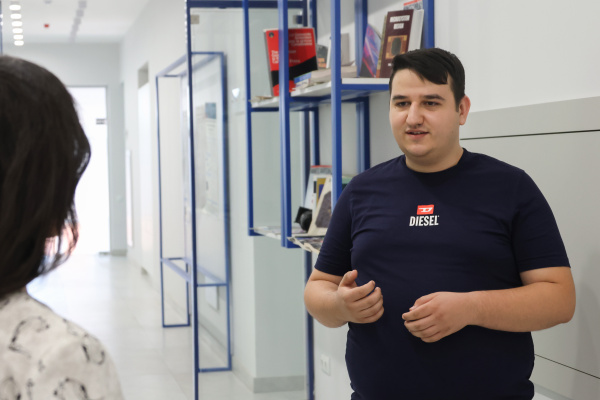July 16, 2025 | 10:10
Education
Competitions
Student
When physics "thinks," IT "realizes": YSU student Mikayel Sahakyan among the best in IT sector
According to the results of this year’s annual educational awards ceremony in information technology (IT), Mikayel Sahakyan, a student at YSU Physics Institute, was awarded the first degree prize in the category of "Best Master’s Student." The student from the "Semiconductor Physics and Microelectronics" master’s program noted that this recognition is the result of years of dedicated work, initiative, and the effective application of knowledge gained across various disciplines.

"This award instills new confidence and allows me to present myself from a stronger position in both academic and professional environments," says Mikayel. He believes that the key to his success lies in his relentless desire to learn, along with the willpower and perseverance never to give up.
"I often try to step outside of conventional boundaries—finding intersections between different fields and effectively applying my accumulated experience to new and diverse situations," he emphasizes.
Mikayel’s decision to pursue physics was driven by his desire to understand the world. He explains that this branch of science enables him to explore the essence of both the simplest and the most complex phenomena.
Science Lover's Choice: Physics
Mikayel’s decision to pursue physics was driven by his desire to understand the world. He explains that this branch of science allows him to explore the essence of both the simplest and the most complex phenomena.
"For me, the process of learning is a value in itself. When I work on solving a technical or academic problem, I realize that I’ve overcome a new challenge or created something new. That’s what inspires me deeply. It’s not just about learning, but rather about targeted development—purposeful and conscious progress in a specific direction," notes the awardee.
Currently, Mikayel is conducting research for his master’s thesis on the growth of semiconductor nanoparticles with narrow bandgap structures. These materials have significant applied potential in the development of infrared photodiodes, especially in the design of high-sensitivity infrared sensors. He has already published two scientific articles.

In addition to his studies, Mikayel is gaining professional experience at Emerson (formerly National Instruments) as a technical support engineer in radio frequency (RF) systems. His role involves collaborating with engineers from around the world, providing technical consultation and troubleshooting. This experience has given him insight into how the systems developed by the company are used—from research laboratories to large-scale industrial projects.
Mikayel reflects on his achievements, including the scholarships he has received, the internships he has completed, the conferences he has attended, and the startup initiatives he has contributed to. He notes that in recent years, he has strived to be as active as possible in academic, engineering, and entrepreneurial arenas.
"I look back with particular pride on my graduation paper project, which focused on designing a non-invasive infrared glucometer. It was my first experience where I developed a functional device from scratch, integrating theoretical modeling, engineering design, and lab testing. Together with my academic advisor, Professor Karen Ghambaryan, Head of the Chair of Semiconductor Physics and Microelectronics at YSU Physics Institute, we developed a mathematically grounded model to convert the voltage detected by the sensor into glucose concentration. This project taught me a great deal—from modeling physical phenomena to full system implementation," says Mikayel.
University as a Platform for Learning, Experimenting, and Growth
Studying at YSU Institute of Physics, he says, has greatly contributed to developing his analytical thinking and enriching his knowledge. Thanks to the active support of research groups and ongoing interaction with high-level professionals, he has gained experience in scientific research, the ability to conduct in-depth investigations, and teamwork skills.
With a smile, he recalls his time at university and shares a particular memory—spending the night in the lab with his team to finish a project.
"It seemed like an ordinary night, but the working energy, creative atmosphere, and the feeling of creating something new together stayed with us for a long time. That was one of the best moments of my university life—a mix of collaboration, learning, and genuine human warmth. I realized then that when you love what you do, time and workload take on a whole new meaning," says Mikayel, highlighting that science, for him, is not just a laboratory or literature, but a platform to shape new ideas, test them, and one day create positive change in the world.
IT and Physics: United Around a Common Purpose
Mikayel has been fascinated by technology since school, but during his university years, he came to understand that IT provides an excellent platform to transform physics-based thinking into practical solutions.
"When I started developing systems myself, it became clear how powerful the synergy between physics and IT can be. What excites me most is that IT allows us to turn scientific ideas into technological solutions. Most importantly, my professional field—semiconductor physics—is tightly connected to the foundations of IT. When people hear 'semiconductors,' they usually think of chips. But when you delve deeper, you see that chips are just one part of a vast world. In fact, almost everything around us depends on semiconductor-based solutions," he explains, adding that the field has great potential in Armenia.

He also points out a few challenges in the sector: while many students possess solid theoretical knowledge, they often struggle to apply it in real-world projects. In his view, it’s essential to foster collaboration between students and industry through internships, competitions, and public projects. This would help young people gain hands-on experience and more easily integrate into the practical processes of the field.
Mikayel himself has had the opportunity to work on applied projects, ranging from RF systems to embedded devices and AI applications.
"In addition to my graduation paper, I can mention the 'Direction Finding via USRP System' project in the field of RF and signal processing. Using the USRP device, we developed a system to determine signal direction. The project is still ongoing, but we already have a prototype that works under specific conditions. Within the 'Hunter G Armenia' project, I worked on developing an autonomous system designed to detect spiders and scorpions using artificial intelligence and a 360° field of view," he says. His overarching goal is to become a bridge between science and technology—helping translate fundamental knowledge into practical outcomes, whether it’s the discovery of a new material or the development of a technical system.
Driving Forward with Clear Goals
Mikayel is determined to participate in initiatives that foster the development of local scientific potential and have practical international impact. He places great value on sharing knowledge, particularly with the younger generation, believing that even inspiring one student to pursue scientific research can have a lasting positive effect.
Most importantly, he is convinced that with perseverance, a deep approach, and the desire to create value, one can not only build a successful career but also advance the entire field.
"I want to keep learning and growing, engage in research projects, turn engineering ideas into practical solutions, and one day launch my own science and technology company," Mikayel says, adding that he is committed to continuing his academic path by pursuing a PhD to deepen his expertise and contribute meaningfully to the fields of materials science and semiconductor physics.

